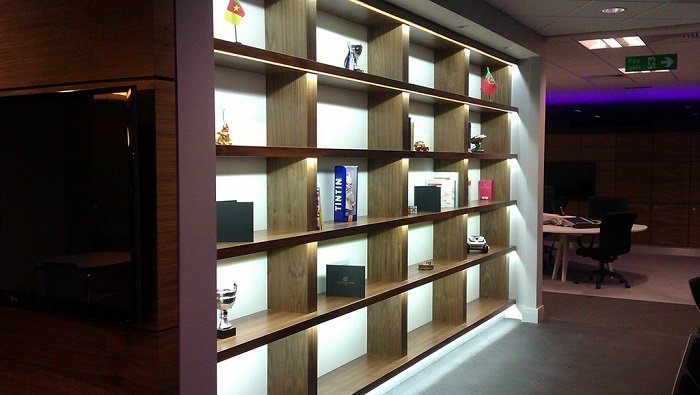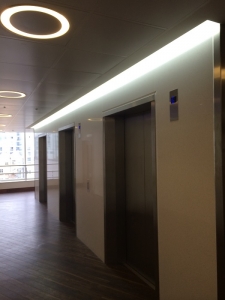Because of the economy and reliability they offer, LED solutions can truthfully be called the energy-efficiency market’s leading lights (ha!). 20 percent of electricity consumed in commercial premises is typically down to lighting, so all kinds of locations – from large warehouses and depots, all the way to shops, offices and other work areas – can reap big savings. By replacing an existing halogen system with an LED equivalent, you could expect to reduce electricity consumption by up to 85 percent.
Many businesses and other organisations have already recognised the benefits of a shift to LEDs. At InStyle, our client list includes end users such as Marriott hotels, Nike, Lloyds TSB, Paddy Power, Walkabout bars and William Hill. These businesses, and others like them, choose the highest quality LED products (quality really does matter!) – because a long operational life expectancy is another major benefit of the technology: ideally, your LED products should be something you can simply install and then forget.
But other companies still have yet to make the move to an energy-saving LED lighting system. Maybe your business is one.
What’s stopping you?
So what factors are holding things up?
- Often, it’s a lack of awareness of the benefits. For businesses that run close to 24-hour operation, the short-term savings are very clear. Their premises will certainly achieve the quickest efficiency returns on an LED installation. But they’re not the only ones: any organisation can make real savings, especially if an effective control policy is implemented at the same time.
- Another obstacle is the unfamiliarity of decision-makers with the technical aspects of a replacement project… they understandably seek a supplier who’ll offer reliable support throughout the project.
- One specific technical issue that gives some potential buyers pause is the difficulty of finding practical like-for-like comparisons of the brightness levels produced by LEDs and the lights they’re to replace. The best way to choose the right match is to compare lumens (the standard measure of brightness in the lighting industry). But if the equipment you’re considering doesn’t specify how many lumens it will output, we’ve put together a handy table of wattage equivalences that may help during the design phase of your project. Double-check with one of our technical experts or with your lighting designer who has real-world experience with LEDs before buying.
- Finally, let’s talk about voltage. Most LEDs require a stepped-down voltage to power them, and different LED products operate in different low-voltage ranges. They’re very sensitive to voltage-drops and over-voltage, so it’s important to get this right. Most LED strips will start to suffer a voltage-drop at more than 5 or 6 metres from their power-supply.Also, if you’re intending to implement dimming functionality, be aware that not all LED power-supplies can act as primary dimmers. (That’s to say, some transformers can’t be linked directly to your dimming control – they need a secondary dimmer-control wired between the transformer and LED product.)
Although you need to be aware of the issues above, you shouldn’t see them as problems. The LED lighting revolution has now reached the stage where you can do anything you want to do, as long as you take your time and talk to the experts.
The growing popularity of LEDs goes to show that businesses and other organisations believe the advantages are undeniable.
So what’s stopping you?


